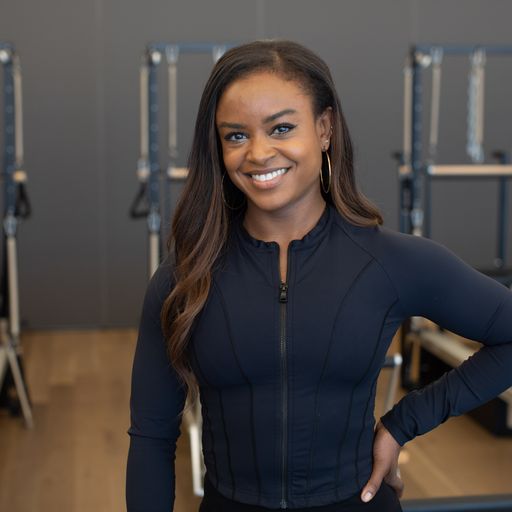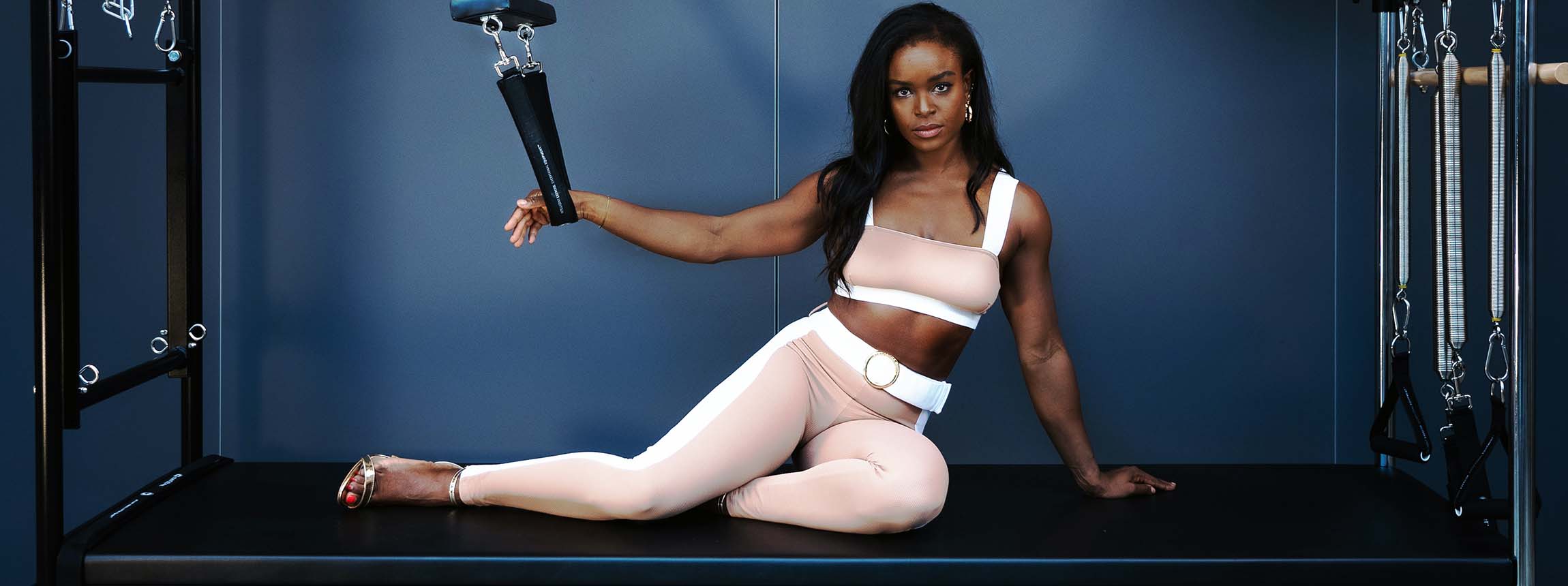With mobility workouts currently exploding across the globe, Marsha Lindsay, leading female Pilates instructor, creator of the Pilates by Marsha method and the Founder of Nobu Pilates, has put together her top desk Pilates routine to help relieve tension and boost your energy during office hours.
“Many people find that prolonged hours of sitting at their desk can affect their mobility,” says Marsha, “But with some simple movements, you can increase your range of movement and improve your posture.”
Try these five simple exercises to open up your range of movement:
- Do the twist:
“Plant your feet on the ground, hip-width apart. Keeping your hips stable and centred, take hold of either the arm of your chair or the back of your chair, then use one arm to reach across your body and look over your shoulder.
Hold for five seconds, and then release. Try this five times and then repeat on the other side. This will twist your spine and ribs and help you get some rotation and movement into the spine.”

- Try the shoulder stretch:
“The longer we sit at the desk, the more gravity takes hold and the more you type, that position will take hold and comprise your shoulder posture, which will make muscles tight.
Practice sitting up straight in your desk chair with your feet planted firmly flat on the ground. A simple move to try is to squeeze the shoulder blades together as if there is a lemon between them.
Hold this for 10 seconds and then release and repeat five times. Pair this with shoulder rotations, lifting the shoulders up to your ears and back down 10 times, then repeat this action but try rolling shoulders forward 10 more times.”
- Support the spine:
“Prolonged periods of sitting can cause aches and pains in the lower back and this is because we naturally forget to recruit our lower abs to support the lumbar spine.
To strengthen your abdominals and ensure they stay connected to your lower abdominals, sit up straight. Then pull your belly button towards your spine and try to lift from the waist.
Hold that for 10 seconds and then relax and aim to repeat this five times. The key here is to think about pulling your abdominal muscles upwards and inwards and this should help support the load on your back over time, if you keep doing it.”
- Treat your feet:
“Tension in the feet, whether it’s the arches or the ball of the foot, is common for most people. All of our weight is transferred through our feet, so while you’ve got time at the desk, it’s a good idea to roll your feet out and really stretch them.
A foam foot roller helps but you could also use a tennis ball or even your metal water bottle to help with the stretch. Place it on the floor and remove your shoe, then roll the sole of your foot along its surface and this should ease any tension in the plantar fascia.”
- A Necks level stretch:
“Neck tension is so common, brought on by being hunched over laptops and phones. Improve flexibility and mobility by sitting in your desk chair and reaching one arm down to hold the base of the chair. Then take your other arm and place your hand on your head, using it to guide the head down towards
your shoulder without too much pressure. This will help to stretch the scalene muscles in the neck, accommodating free movement. Hold it for 10 seconds and then release and go straight onto repeating on the other side.
Keep alternating sides, but it’s essential to not pull the neck, it should be very gentle pressure, so you don’t damage or put pressure on the vertebrae.”
